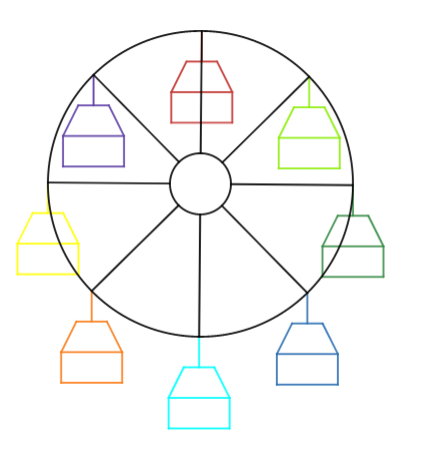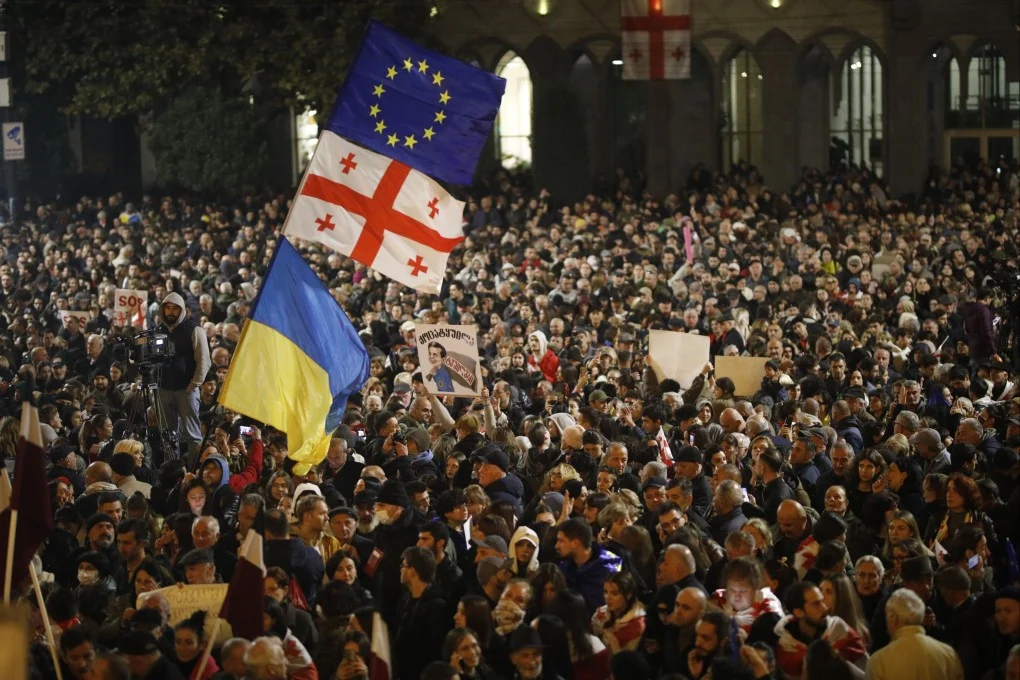As of now, Georgian citizens are protesting and have been for many nights. This ties back to a long history of Russian influence in Georgia. In 1921, Russia invaded Georgia, a country on its Northern border, in order to transfer its government and ideals to this country. This was due to the 1917 change in the Russian government, in which extreme leftists overthrew the Russian government and created their own communist one. This invasion was just the start of modern interactions between Russia and Georgia. In 2008, Russia and Georgia had a five-day conflict in South Ossetia, a province in Georgia. Russia overpowered Georgia, and a ceasefire agreement was set in place.
This really began with the fall of the Soviet Union. The USSR, Union of Soviet Socialist Republics, was a union of countries under communist rule led by Russia. Not only did this give Russia more control over other countries, it made them a larger power against the countries in NATO (The North Atlantic Treaty Organization), which includes large powers like America, The United Kingdom, and France. Eventually, the USSR began disintegrating due to political conflicts between the states and the central government. The Baltic states – Lithuania, Latvia, and Estonia – were the first to break away from the Soviet Union. On September 6th, 1991, the Soviet Union officially recognized the independence of the Baltic states, followed by the full withdrawal of Russian troops from their region a few years later; Georgia declared its independence in April of 1991, just before the fall of the Soviet Union in December of 1991.

Another important cause of the Russo-Georgian war was Georgia’s intention to join NATO. Following their independence from the Soviet Union, the Baltic states became intent on joining NATO. They applied in 2002 and all joined on March 29, 2004. As NATO is an alliance with countries including the UK, the US, and France, Russia had lost their former allies to their enemies, as Communism and Capitalism – the two different belief systems between the two powers – directly oppose each other. Georgia soon decided to follow in the Baltic’s footsteps, and join NATO as their government post-Soviet Union led to a change in beliefs. Not only is NATO a direct threat to Russia, but Russia is a big country that shares borders with many other countries. In the case of possible war involving Russia, NATO or other nations would need to go through these countries in order to get into Russia. This motivates Russia to want the countries bordering it to fight for Russia, and be an extra layer of defense. They would be losing Georgia in this tactic if they joined NATO.
A large cause that allowed Russia to initiate the Russo-Georgian war was Russian loyalism in Abkhazia and South Ossetia; both Georgian provinces located on the northern border of Georgia, bordering Russia. Due to the placement of the provinces, Russia has more control over these territories politically with a lot of Russian loyalism among citizens and local governments. Leading up to the war, an unarmed Georgian surveillance drone was shot down in Abkhazia by Russian forces. Russia claimed they were not responsible, but it was later found that they were. Russia also started increasing its troops in South Ossetia, which worried the Georgian government. This loyalism created internal conflict in Georgia, which made the country more susceptible to potential attacks from Russia. It also gave Russia more power and allies, as it now has more citizens and troops on their side which grows its power in the conflict.
A long-lasting effect of this conflict was the moving border between Russia and Georgia. As mentioned, South Ossetia is a Russian loyalist province. After the war ended, South Ossetian and Russian troops moved a makeshift border between the two countries further into Georgia. They gave South Ossetian farmers and landowners 72 hours to harvest their crops and leave their homes. Those who didn’t leave were taken into Russian custody. These troops do this about every night, usually only moving a few yards, but once they moved it more than a mile. This makeshift border is very small, and does not cover all of the territory it should, so the border can get extremely confusing for Georgians, especially since it is constantly moving and changing. Any Georgian civilians who cross the border are taken into Russian custody, whether it’s to get something from their homes or harvest crops. For years, troops have been doing this, slowly moving further and further into Georgia. Houses have been burned to the ground, and people have become Russian prisoners. Though the border is not accepted as the official border, Russia’s control is moving further into Georgia. This not only affects landowners and farmers, but it has also divided friends and families, as contact between the two areas is strictly forbidden.
Recently, the Georgian government announced that it would stop the process of joining the EU until at least 2028. Those currently in power have been increasing more conservative laws over the past year, including restrictions on press and LGBTQ+ organizations. There is a big question surrounding the state of democracy in Georgia right now, and in the past week, there have been many protests against the choice to postpone their EU entry. Despite the efforts of Georgian citizens, Georgia is still stuck in Russian ideals and governing. Protests are extremely important for America and Western Europe, as it is a democracy that is slowly falling away.































